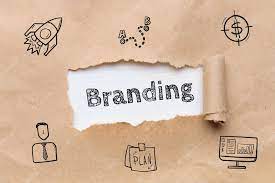Types of Brands and How to Create a Successful Brand Identity
What Is a Brand?
To marketing professionals, a brand is a product or a business that has a distinct identity in the perception of consumers. The brand is created through elements of design, packaging, and advertising that, as a whole, distinguish the product from its competitors.
The product contributes to the brand equity of the company that produces it. A successfully-executed brand provides enormous value to a company, giving it a competitive edge over others in the same industry.
As such, many companies seek legal protection for their brands by obtaining trademarks.
KEY TAKEAWAYS
- A successful brand communicates the qualities of a product to the consumer.
- A product’s design, logo, packaging, and advertising message are all coordinated to convey the brand’s message to the consumer.
- Its brands are among a company’s most important and valuable assets.
- Companies can protect their brands by registering trademarks to protect elements of their brands.
Understanding Brands
A brand is an intangible asset made up of many elements. Together these elements help consumers identify a product and give them reasons to buy it rather than its competitors.
The brand may convey a message that the product is more effective, easier to use, better tasting, cheaper, classier, hipper, or more environmentally sound than its competitors.
This is most challenging, of course, when the product is essentially identical to cheaper competitors. Advil, for example, is a brand name for ibuprofen. Through effective advertising and packaging, its parent company attempts to convince consumers that Advil’s ibuprofen is a better choice than the cheaper generic versions of ibuprofen that sit next to it on pharmacy shelves.
Elements of a Brand
A product’s logos and slogans are elements of its brand and are designed to support a product’s brand identity.
Allstate’s slogan, “You’re in good hands with Allstate,” was introduced in the 1950s. It suggests that its insurance customers can count on it being reliable and competent when they need its help. Its commercials reinforce the message.
Other slogans are harder to translate but nevertheless become an intrinsic part of a brand’s identity. Since the 1930s, the slogan for Kellogg Rice Crispies has been “Snap! Crackle! Pop!” It says that the product adds a pleasing noise to your breakfast but also evokes images of the cheery elves that serve as the cereal’s commercial spokesmen.
Standing Out From the Competition
Successful marketing keeps a company’s brand front and center in people’s minds, at least at the moment of decision-making. That’s why the brand is considered to be one of a company’s most valuable and important assets. It carries tremendous monetary value, affecting both the bottom line and, for public companies, shareholder value.
A company can become inseparable from its brand. Coca-Cola the soft drink is synonymous with Coca-Cola itself, even though the company now owns Schweppes, Dr. Pepper, and Hi-C, among hundreds of other brands.
Newer brands face a great deal more urgency in establishing themselves with consumers. Findstack estimates that a product’s website has precisely 0.5 milliseconds to convince a consumer to stay or go.
Special Considerations
In the age of reality television and social media, a person can be a brand.
The Kardashian family members developed brand value after gaining popularity from their long-running reality show. Collectively and as individuals, they have used their name to successfully launch media and modeling careers, spinoff shows, cosmetics, perfumes, and clothing lines.
History of Brands
The concept of branding may go as far back as 2000 B.C., when merchants began considering how they could sell their wares more effectively. Merchants in ancient Babylon developed sales pitches to lure in customers. Craftsmen branded or carved symbols on their merchandise to indicate their origin. Tavern owners hung attractive signs outside.1
The word “branding” for product marketing might have come into use in the 19th century when Western cattle ranchers started using hot irons to mark their livestock with the ranch’s initials or a symbol. Their initial purpose was less marketing than protection from cattle rustlers, but the association stuck.
Branding as mass marketing took off in the 19th century, as sellers of products like flour began thinking about ways to distinguish themselves from their competitors.
Types of Brands
The type of brand used depends on the entity using it. The following are some of the most common forms of brands:
- Corporate Brands: Corporate branding is a way for companies to enhance their reputations and distinguish themselves from competitors in their industries. The company’s pricing, mission, target market, and values all reflect the corporate brand.
- Personal Brands: Social media enabled ordinary people to become influencers. Their financial success depends on their ability to create a brand that attracts an audience that certain advertisers want to reach. Personal brands are built through social media posts, sharing images and videos, and conducting meet-and-greets.
- Product Brands: Introducing a new product or supporting an existing product involves creating and maintaining its brand. Branding a product starts with market research and identifying the right target market.4
Creating a Brand
When a company seeks to define its public image, it first must determine its brand identity, or how it wants to be viewed by the public. A company logo reflects its message, slogan, and product.
The goal is to make the brand memorable and appealing to the consumer, or rather to the consumer that the company is targeting, whether that is hip single people, couples with small children, or affluent retirees.
The company may use a design firm or logo design software to come up with ideas for the visual aspects of a brand, such as its logo. A successful brand accurately portrays the message or feeling the company wants to get across. This results in brand awareness, or the recognition of the brand’s existence and what it offers.
Once a brand has created positive sentiment among its target audience, the firm is said to have built brand equity. Some firms with brand equity and very recognizable product brands include Disney, Coca-Cola, Ferrari, Apple, and Nike.
If done right, a brand results in an increase in sales not just for the specific product being sold but for other products sold by the same company. A good brand engenders trust, and, after having a good experience with one product, the consumer is more likely to try another product related to the same brand.
The phenomenon is known as brand loyalty.
To be fair, Toys R Us made a comeback in 2022 as a store-within-a-store at some Macy’s locations.
The Bottom Line
When we hear the word “brand,” most of us think of a logo, a slogan, or another identifiable mark. But that’s just one part of the definition. The term brand is actually an intangible marketing concept that helps people recognize and identify a product and, at best, reach for it instead of one of its competitors.
Its brands are among the most important and valuable assets that a company owns. They can make or break a company. That’s why companies do extensive research before launching a new product. They work to identify the target market for their product. From there, every aspect of its content, design, and marketing is tailored to the brand identity that they want to create for that market.
Trade on the Go. Anywhere, Anytime
One of the world’s largest crypto-asset exchanges is ready for you. Enjoy competitive fees and dedicated customer support while trading securely. You’ll also have access to Binance tools that make it easier than ever to view your trade history, manage auto-investments, view price charts, and make conversions with zero fees. Make an account for free and join millions of traders and investors on the global crypto market.




